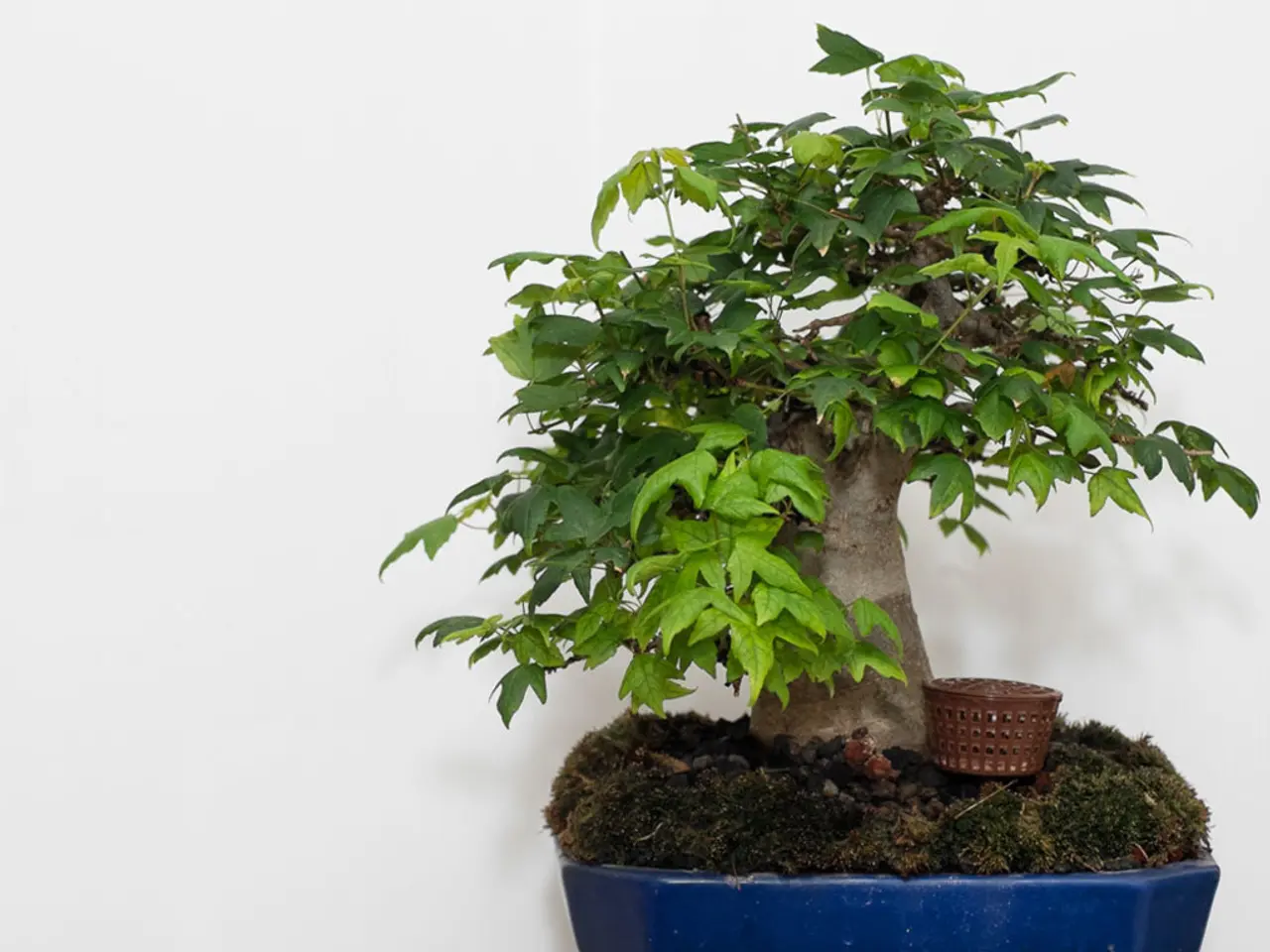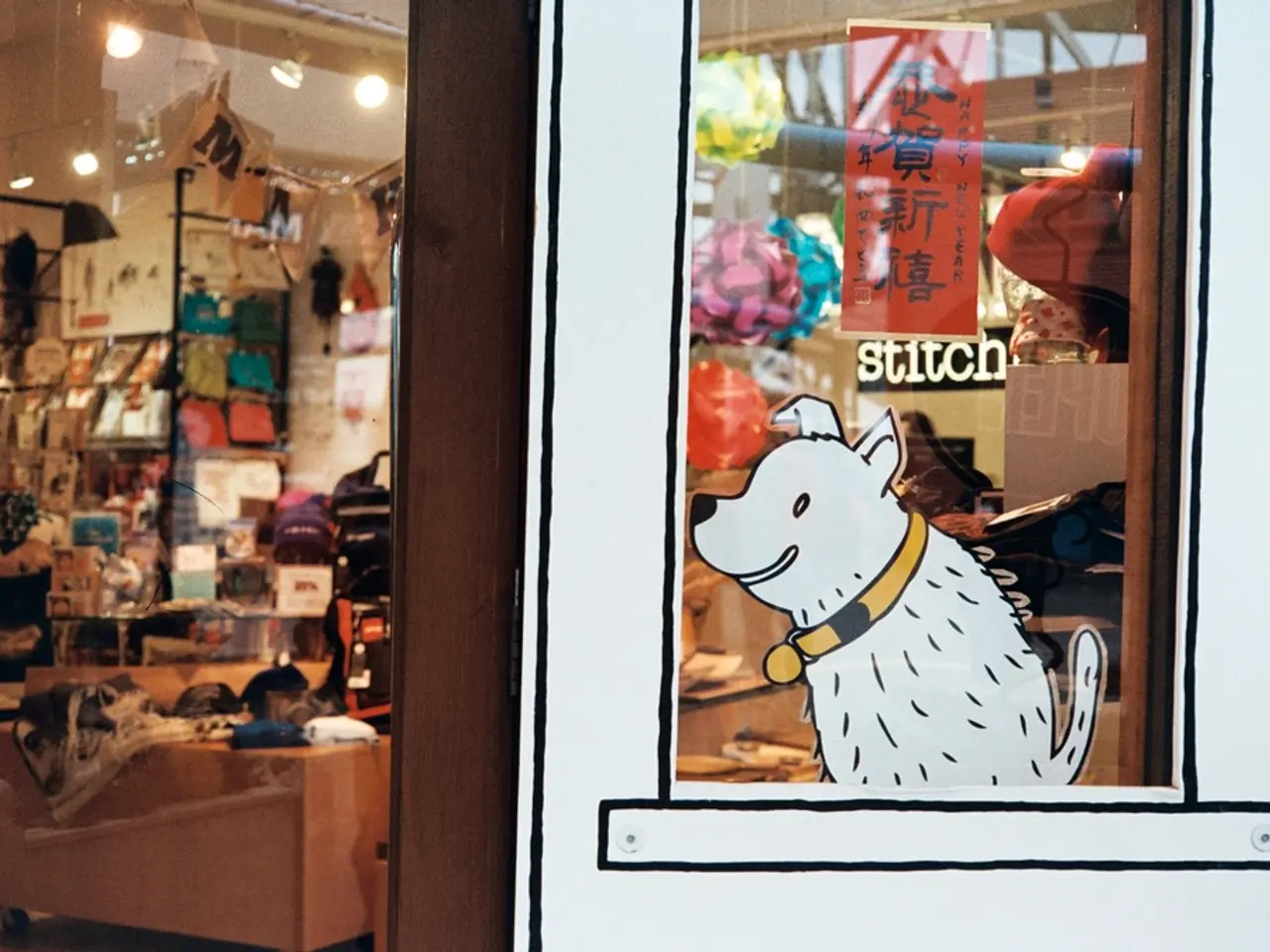Revitalizing and Encouraging Growth in Bonsai Roots: A Guide for Maintenance
In the world of bonsai, maintaining a healthy root system is crucial for the overall well-being of the tree. This article will guide you through the best practices for cleaning bonsai roots, highlighting the benefits and importance of this essential process.
Cleaning bonsai roots is a meticulous task that involves carefully removing the tree from its pot, gently rinsing the roots with water to remove old soil, and using a root rake or chopstick to comb through the roots, removing dead or compacted roots and soil fines. This process often includes trimming thick or circling roots to keep the root system healthy and encourage new root growth.
The significance of root cleaning lies in promoting healthy root development, preventing root rot and diseases caused by compacted or decomposed soil, and allowing for better nutrient and water absorption. Removing old soil and dead roots ensures there is enough oxygen circulation to the roots, and avoids nutrient depletion in the confined pot environment, directly supporting the tree's vitality, growth, and overall health.
When repotting, it's recommended to soak the roots in water to soften soil residues. A root rake or root hook is used to carefully remove old soil without damaging fine roots. Dead, rotten, or overly thick roots should be pruned to stimulate fresh root growth, and any root-bound or circling roots should be removed to prevent girdling. Fine feeder roots, crucial for nutrient uptake, should be handled with care.
Regular root cleaning is particularly important during repotting periods, typically done every 1-3 years depending on the tree species and growth rate. It prevents soil compaction and reduces the build-up of soil fines that can block water and air flow.
After cleaning, the bonsai should be repotted in fresh, well-draining bonsai soil for optimal growth conditions. The tree should be watered sparingly but thoroughly, allowing it to regain its vigor. The process of disentangling bonsai roots requires patience, precision, and a gentle touch to avoid damaging root hairs and structures.
Using precision-crafted bonsai instruments is essential for root cleaning to ensure a gentle, therapeutic touch that nurtures rather than harms. Root cleaning and pruning should ideally be done during the tree's dormant or semi-dormant phase to minimize stress and promote healthy growth.
Signs of root-bound bonsai trees include slowed growth, yellowing or wilting leaves, increased water consumption, visible roots growing out of the pot, and decreased resistance to disease and pests. Root bound, a common issue in bonsai cultivation, occurs when the root system outgrows its container, leading to stunted growth, nutrient deficiencies, and increased susceptibility to disease.
Aftercare considerations include gentle handling, careful watering, providing sufficient humidity, avoiding extreme temperatures and direct sunlight, fertilizing sparingly, monitoring for signs of stress or disease, and referring to a trusted bonsai repotting guide for species-specific guidance on post-pruning care.
A well-maintained root system enables the tree to better withstand environmental stressors such as drought or extreme temperatures. Understanding bonsai physiology and showing reverence for the tree's underground ecosystem is crucial during root disentanglement.
Techniques for disentangling bonsai roots include gently teasing apart roots, using a root hook, trimming away dead or damaged roots, using a gentle rocking motion, and regularly misting the roots with water. Proper root cleaning and pruning can lead to increased healthy root growth, better nutrient absorption, and a stronger foundation for the tree.
Wait a few weeks after root cleaning before fertilizing to allow the tree to re-establish its root system and regain stability. Fertilization should be avoided immediately after root cleaning, as the tree's energy is focused on root regrowth. By mastering the art of root cleaning, one may unshackle the secrets of these miniature marvels, coaxing forth a tapestry of essence and beauty that whispers secrets of the natural world.
In conclusion, root cleaning is an essential part of bonsai maintenance that promotes healthy roots, prevents diseases, and ensures optimal growth conditions. With patience, precision, and the right tools, you can help your bonsai thrive and flourish.
- The process of cleaning bonsai roots involves a meticulous task of removing dead or compacted roots and soil fines, using a root rake or chopstick, and repotting the tree in fresh, well-draining bonsai soil.
- Root cleaning is crucial for healthy root development, preventing root rot and diseases, allowing for better nutrient and water absorption, and promoting the tree's vitality, growth, and overall health.
- Regular root cleaning is particularly important during repotting periods, preventing soil compaction and reducing the build-up of soil fines that can block water and air flow.
- Using precision-crafted bonsai instruments is essential for root cleaning, ensuring a gentle, therapeutic touch that nurtures rather than harms the tree.
- Aftercare considerations for bonsai trees include gentle handling, adequate humidity, avoidance of extreme temperatures and direct sunlight, regular monitoring for signs of stress or disease, and sparse fertilization.
- With patience, precision, and the right tools, one can master the art of root cleaning, leading to increased healthy root growth, better nutrient absorption, and a stronger foundation for the tree.




